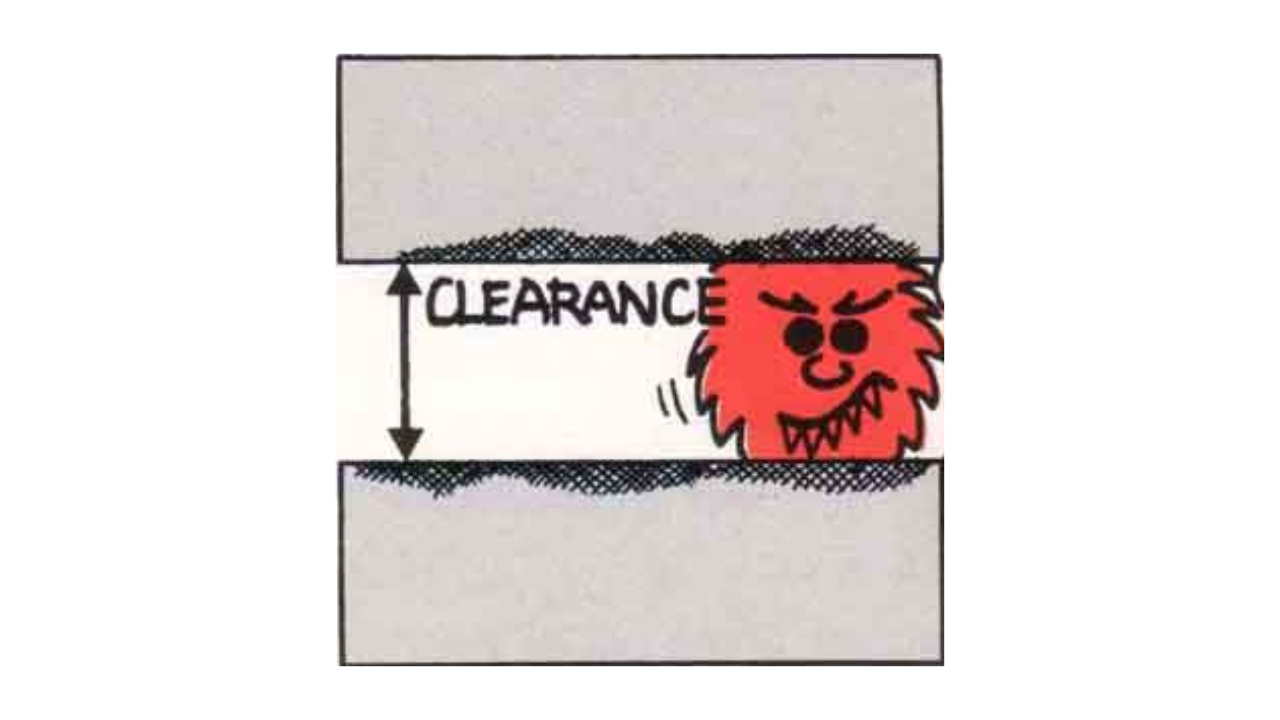Root Cause Analysis: Will It Find the Weak Link?
Robert J. Latino, Reliability Center, Inc.
Have you ever conducted a comprehensive, disciplined and accurate root cause analysis only to find that the recommendations fell on deaf ears, or worse, nobody followed through on the approvals that were granted? Getting to the root cause is the easy part. Getting something done to eliminate them is a different matter.
Picture this scenario. You identified a failure worthy of root cause analysis. You know the total value of the loss in terms of maintenance dollars, manpower dollars and lost profit opportunities – somewhere in the six – to seven-figure range. You strategically organize a team to address the problem, develop a charter and list the elements that constitute success. The team skillfully develops strategies, collects appropriate data and analyzes it. The team also uses a little deductive logic to validate hypotheses and determine the various physical, human and organizational root causes. You make recommendations that mitigate or eliminate identified causes. The team makes a presentation to decision-makers who authorize the implementation of the recommendations. And that is the last that anybody hears of the root cause analysis.
If this scenario is familiar, someone in your plant is committing an organizational cardinal sin. Think of the resources used in performing such a beautiful work. Think of the thought, diligence and dedication that went into the process. Think of the anticipation and expectations of the team members regarding their recommendations. Think of how they feel when nothing happens as a result of their work. If you were on the team, would you be willing to try it again?
Why does this happen?
As a teacher and a practitioner of root cause analysis, I see not only the physical motions of going through such an effort, but also the psychology behind what makes or breaks it. When you consider the effort that goes into determining root causes and developing recommendations, why should it be such a hard sell to get something done?
It is ironic that we see average returns for root cause analysis in the neighborhood of 800 to 1,000 percent, yet no one believes these figures because they are considered too “pie-in-the-sky.” If management honestly believed that such returns could be realized, they should have no problem making sure recommendations were executed immediately. The problem is they do not believe it. Some of this thinking may be well founded. For instance, maybe past efforts have not produced what they promised. Therefore, why take the risk again? Others say they conduct root cause analysis on everything. This is impossible – I have not seen a company yet that can afford to perform rigorous root cause analysis on everything. One problem is what people define as root cause analysis.
If management questions the economic feasibility of implementing the solutions, then the original failure was not worthy of root cause analysis. Rigorous root cause analysis involves getting past the physical components of failure and into specific human actions that triggered the cause-and-effect chain that led to physical failure. It also involves determining “why they did it.”
Most people value their lifestyle. Therefore, most people do not intentionally make bad decisions that lead to failure. In most cases, the decisions were made with good intentions but with bad information. This bad information comes from what we call latent roots, or management system roots. These are the rules and regulations in a plant – the policies, procedures and specifications that apply to training systems, stores systems and other aspects of daily operation. They are the sources of information on which people base their decisions. If the sources are flawed, so will be the decisions that spring from them.
It is a commonplace misapprehension that when we fix something tangible, the problem will vanish forever. Even worse, some still believe that witch hunting prevents failures from recurring. Neither is true.
Management is generally satisfied when a physical root has been resolved. However, this temporarily prevents the failure from recurring. Unless the flawed decision-making process is corrected, another person will use the same flawed source to make another decision that will result in the same (or similar) failure happening again.
Politics to the Fore
People are more amenable to spending money on tangible items, such as a motor or a coupling, than on modifying a start-up procedure, changing the specifications on a seal or providing training in proper maintenance practices. The truth is that the physical roots typically cost much more that the latent roots. The hard part about dealing with latent roots is that they are soft issues that deal with human beings. Whenever you delve this deeply into root cause analysis, you can expect plant politics to become a factor. Turf protection, bonus incentive systems, retirement dates and future promotional opportunities are some of the issues we run into when trying to get management to act on latent roots. What would you do if one of the latent roots was a flawed procedure that your boss implemented? Do you cover it up and run the risk of recurrence? Or, do you strategically plan your presentation in a manner that protects and gives your boss the appearance of the open-minded hero?
These are real and difficult situations. After developing appropriate recommendations, the team must strategize about designing and executing the presentation. People must understand that it does not matter who did something. What matters is why. If we do not address the why, a failure is likely to recur. Therefore, if we verify beyond a doubt that a latent root exists, then it is a fact that must be addressed with recommendations.
Revealing the Truth
When designing a presentation to management, the team must first decide what should result from the meeting. Clearly define the corrective actions that you want to take place and work backwards from there. Presentations should link to the objectives and goals of the audience. Clearly understand what makes the decision-makers tick. How are their incentives paid? What are the directives and goals for their department? What are their personalities? For instance, we inevitably face egos that want to be protected. That’s a fact. Those are the cards we are dealt. Now we must play them the best we can.
The key is to design the presentation so it links with the minds in the audience. If you convince them that spending the money will help them meet their goals and objectives, action will be more likely to happen quickly. In a nutshell, to get what you want, make the people you are presenting to look good.
The presentation must involve some quantitative measure regarding the recommended course of action. Too often, people make such presentations then leave the meeting wondering how well they did. At a minimum, when the presentation is over, the question should be raised casually, “Where do we go from here?” The objective is to obtain commitment to action one way or the other before leaving the meeting.
Let’s Get to Work
Once a consensus has been reached on the course of action, set a time line and assign responsibilities. Designate an “account manager” to oversee compliance with the schedule. In our opinion, the account manager should not be the principal failure analyst. A good root cause analyst should be just that – a person who finds root causes. If this same person was responsible for implementing the recommendations, your organization would not complete many analyses. The way most organizations are currently structured, implementing the recommendation takes an immense amount of time.
Typically, most root cause analysis recommendations would be deemed as “improvement work” relative to the urgent reactive work that plagues industry. Where does such improvement work fit into your current computerized maintenance management system? Most have variations of a prioritization system in which an “E” ticket is an emergency, a “1” is to be acted on within 24 hours, a “2” will be acted on within 72 hours and a “3” will likely never be acted upon. Within such systems, recommendations arising from root cause analysis are given a priority “3”. If this happens, chances are it will never get done because reactive work will always take precedence.
Insanity is doing the same thing repeatedly and expecting a different result. This applies to root cause analysis. If you make no change that gives a proactive improvement an even chance against reactive work, then such work will never get done. Try assigning a certain block of numbers to proactive work and allocating a certain percentage of maintenance resources to complete that work. We have seen people use a designation of a “P”, which stands for priority proactive work and is equated to an “E” ticket. Whatever the modification, if your current system does not accommodate proactive work, then something must change.
Counting the Money and Spreading the Word
Let’s assume the promises made were acted on with good intentions and the work was scheduled and executed via the work order system. Are we done? Absolutely not. Unless a predetermined, quantifiable metric has been achieved, something has gone awry. If there is no bottom line benefit from root cause analysis, then your efforts have failed. Only when the objectives established before starting the root cause analysis are accomplished will we be successful. Therefore, make someone responsible for tracking the variable by which you measure success.
Theoretically, we have then achieved our team charter and attained our critical success factors. Now are we successful? Yes, but…! We can be more successful by publishing our findings to the rest of the organization, so others can learn from the completed effort. Often, when we dig down to the roots of the management and organizational system, we find causes that happen daily throughout the organization. After all, many people use that same management system. Those in charge of implementing recommendations should review the applicability of these recommendations in other areas of the facility.
Once successful, let everyone know about it. That is how we gain commitment from others to get on board the root cause analysis train. Use your company newsletters, recognition systems, e-mail networks, Web site, press releases and magazine profiles to let everyone know about your progress. This is how you will be truly successful.
The biggest problem you will face at this point is how to deal with the departments that will now drop their failures in your lap. How to deal with that is the subject of another article.
Robert Latino is the Principal of Prelical Solutions, LLC a Practical Reliability Consulting that is helping companies realize their reliability potential.
Related Articles
Analyzing Semiconductor Failure

Improvement: What Comes First?

An Integrated Process for System Maintenance, Fault Diagnosis and Support

Anatomy of a Boiler Failure—A Different Perspective

Anatomy of a Hydraulic Pump Failure

Are We Willing to Hear What “Failure” Has to Say?




